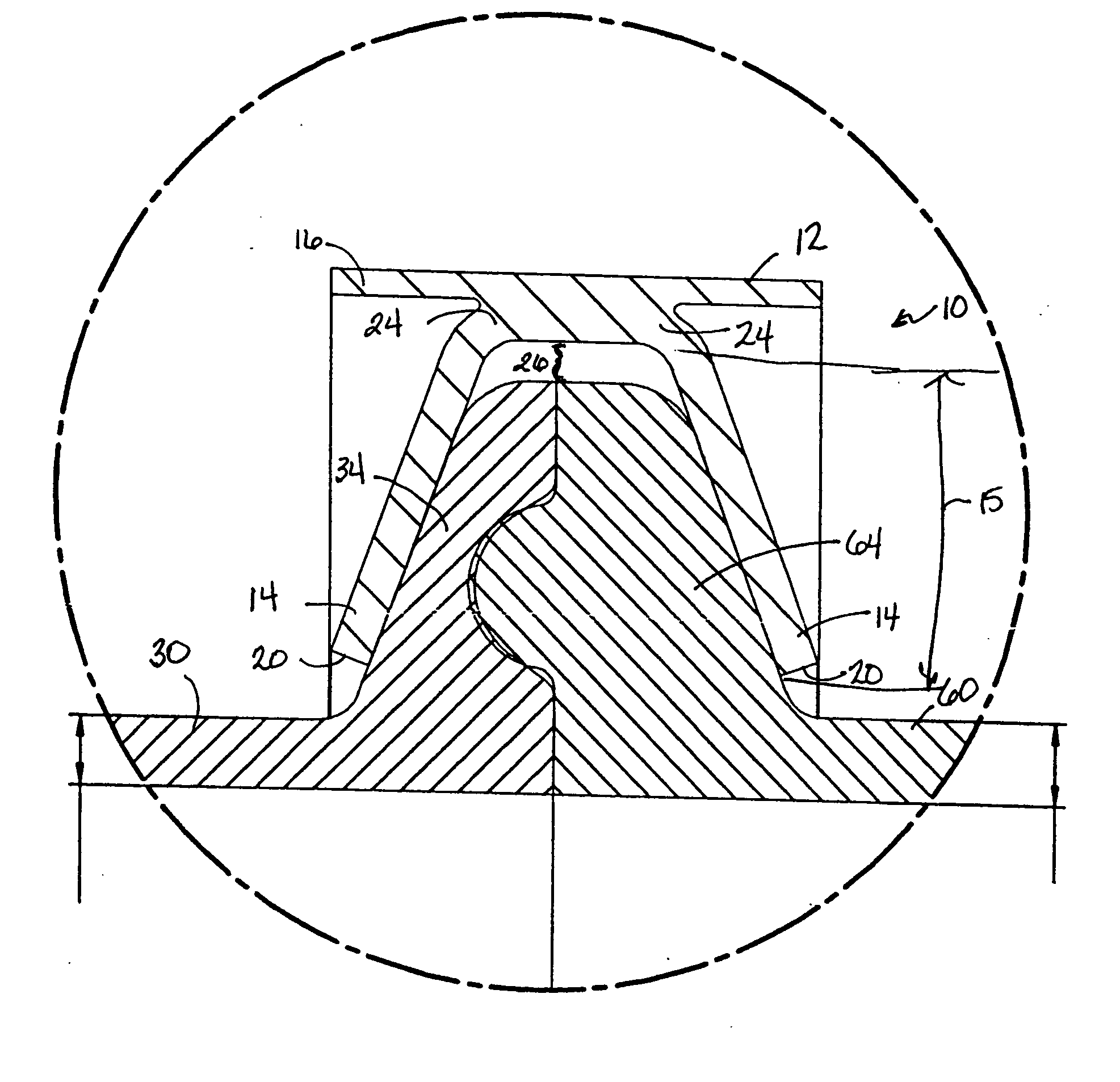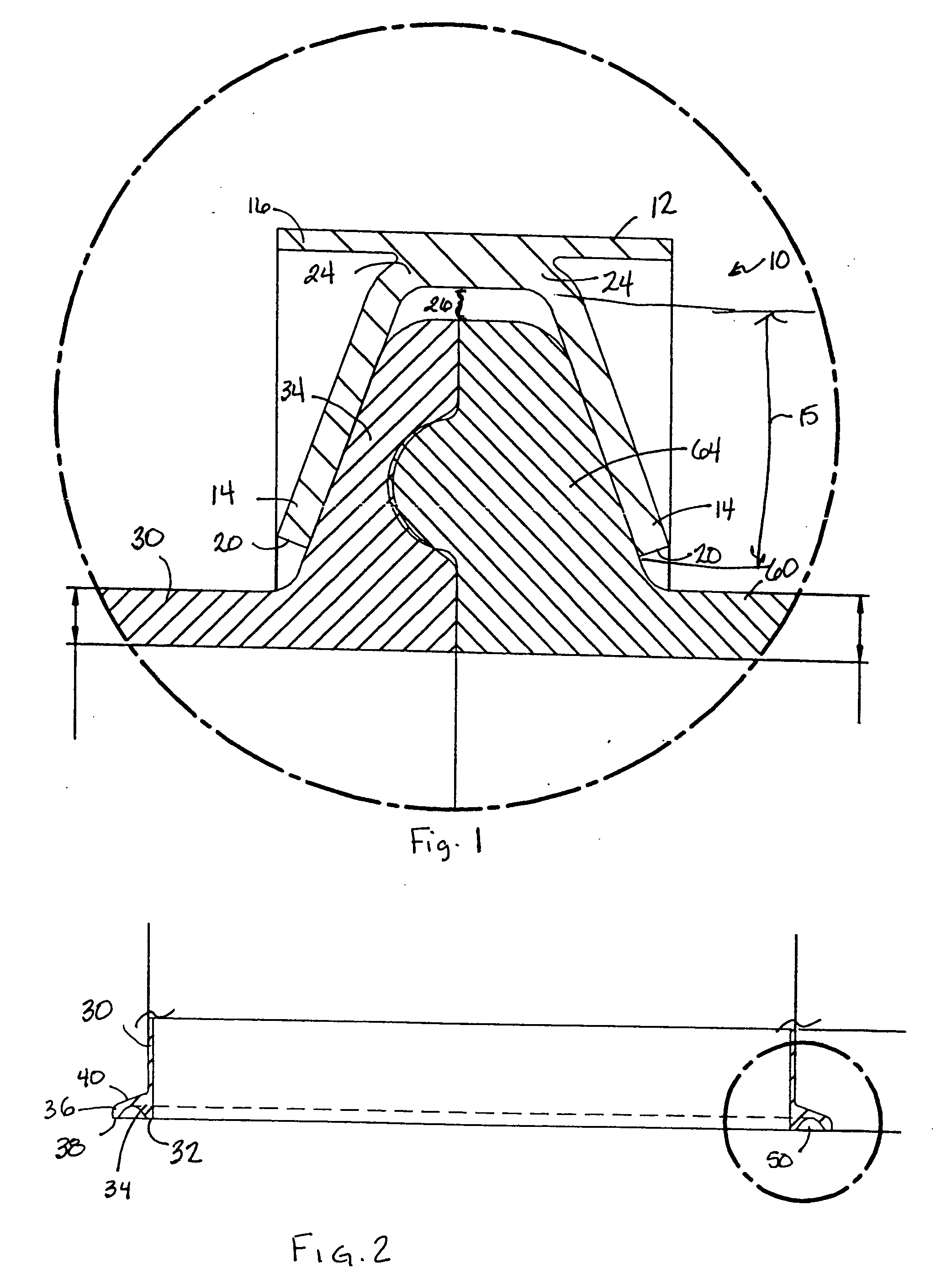Sanitary sealed connector for fluid handling systems and storage devices
a technology of fluid handling system and connector, applied in the direction of fluid pressure sealing joints, flanged joints, sleeves/socket joints, etc., can solve the problems of missing devices designed to address, cost and weight of machined metal components,
- Summary
- Abstract
- Description
- Claims
- Application Information
AI Technical Summary
Benefits of technology
Problems solved by technology
Method used
Image
Examples
Embodiment Construction
[0029] Referring to FIG. 1, a first embodiment of a sanitary connector 10 is depicted. The basic components of the sanitary connector 10 include a first tubular member 30, a second tubular member 60, and a clamp band 12.
[0030] As may be seen in FIGS. 2 and 3, the first tubular member 30 has a first member end 32 from which a first sealing component 34 radially extends outward to a first component outer surface 36, encircling the first member end 32. The first sealing component 34 has a first end face 38 that is substantially flush with the first member end 32 and has a first end face width 44 (shown in FIG. 3). A first component back surface 40 extends between the first tubular member 30 and the first component outer surface 36, forming a first component angle 42 (shown in FIG. 3) with first end face 38.
[0031] Referring to FIG. 3, the first sealing component 34 includes an annular groove 50 formed into the first end face 38. Annular groove 50 is defined by a groove bottom portion ...
PUM
 Login to View More
Login to View More Abstract
Description
Claims
Application Information
 Login to View More
Login to View More - R&D
- Intellectual Property
- Life Sciences
- Materials
- Tech Scout
- Unparalleled Data Quality
- Higher Quality Content
- 60% Fewer Hallucinations
Browse by: Latest US Patents, China's latest patents, Technical Efficacy Thesaurus, Application Domain, Technology Topic, Popular Technical Reports.
© 2025 PatSnap. All rights reserved.Legal|Privacy policy|Modern Slavery Act Transparency Statement|Sitemap|About US| Contact US: help@patsnap.com



